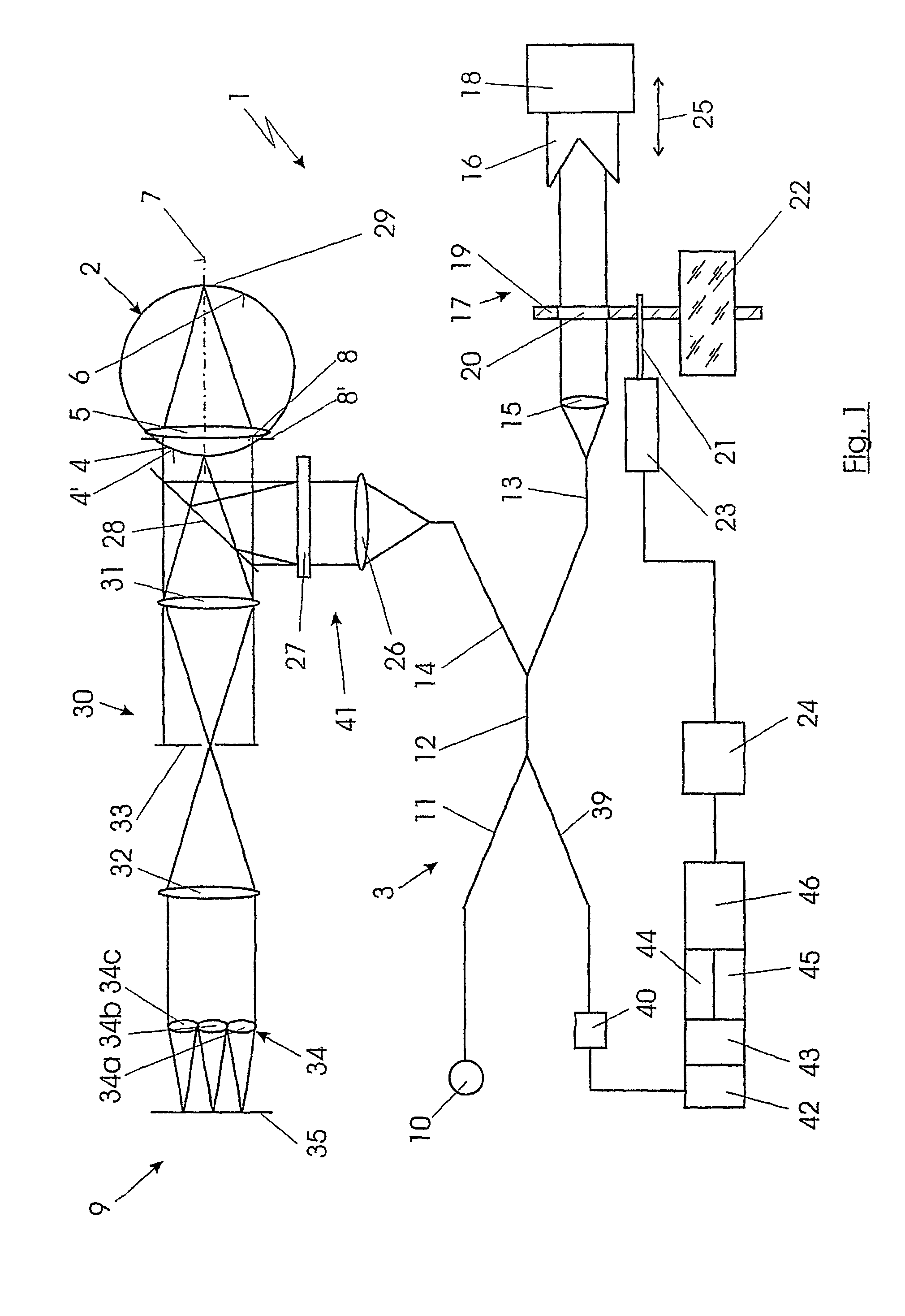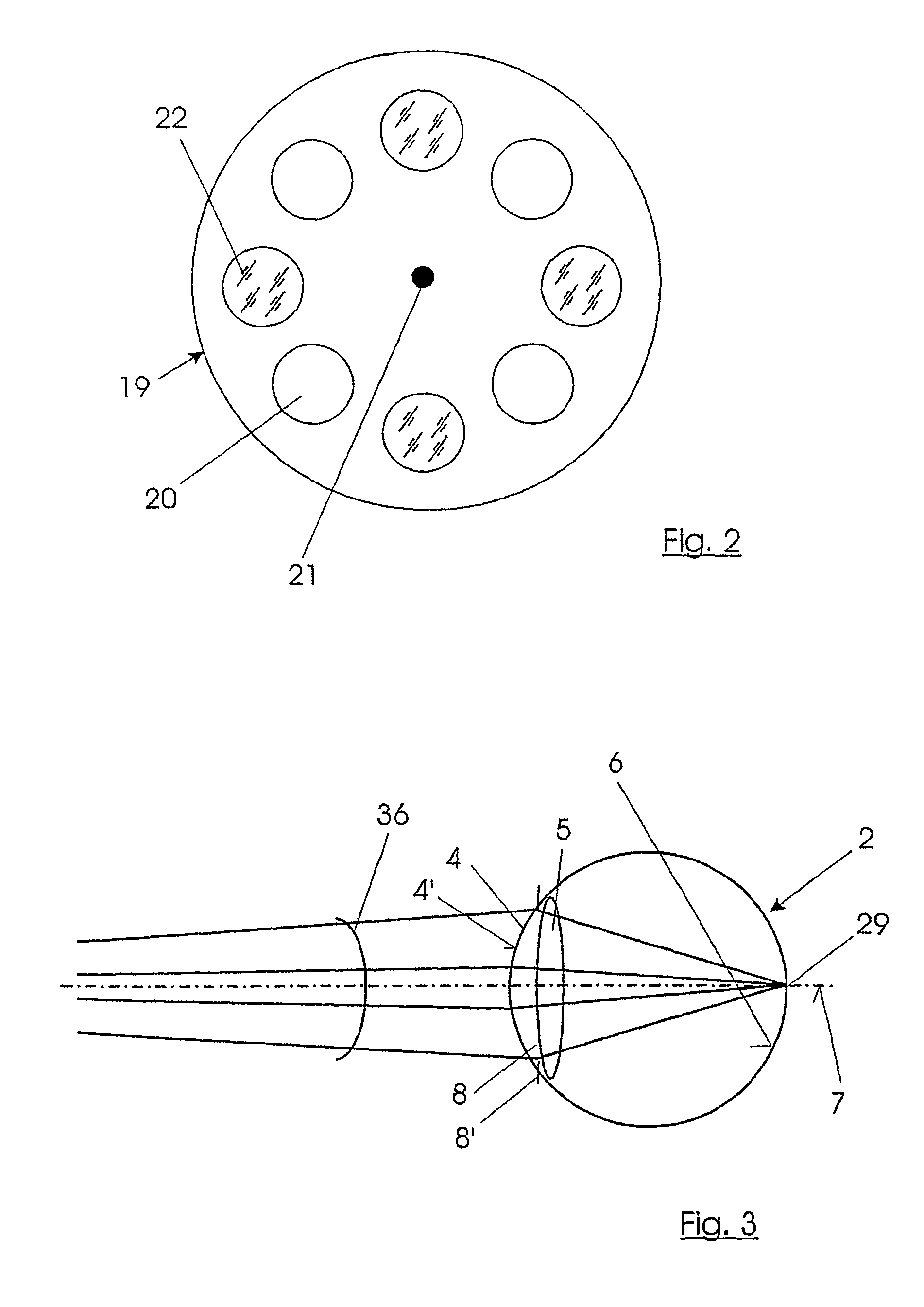System for measuring the optical image quality of an eye in a contactless manner
- Summary
- Abstract
- Description
- Claims
- Application Information
AI Technical Summary
Benefits of technology
Problems solved by technology
Method used
Image
Examples
Embodiment Construction
[0037]FIG. 1 shows a possible embodiment form of the system 1 for contactless measurement of the optical imaging quality of an eye 2 with an interferometer 3. The system 1 is to be used primarily for measuring the human eye 2 during and after surgical procedures in the region of the cornea 4 and lens 5. However, it is also conceivable in principle to use the system 1 for measuring similarly constructed eyes 2 of other mammals, since the system 1 works automatically in any case and does not require any feedback from the patient or subject. This also makes the system 1 suitable for use during operations in which the patient is generally at least partly anesthetized, in which case feedback would possibly be difficult.
[0038]The system 1 is provided for simultaneous measurement of aberrations and of a length L of the eye 2 in a contactless manner, that is, without a probe or the like contacting the eye 2.
[0039]By length L of the eye 2 is meant the distance between the surface 4′ of the c...
PUM
 Login to View More
Login to View More Abstract
Description
Claims
Application Information
 Login to View More
Login to View More - R&D
- Intellectual Property
- Life Sciences
- Materials
- Tech Scout
- Unparalleled Data Quality
- Higher Quality Content
- 60% Fewer Hallucinations
Browse by: Latest US Patents, China's latest patents, Technical Efficacy Thesaurus, Application Domain, Technology Topic, Popular Technical Reports.
© 2025 PatSnap. All rights reserved.Legal|Privacy policy|Modern Slavery Act Transparency Statement|Sitemap|About US| Contact US: help@patsnap.com



